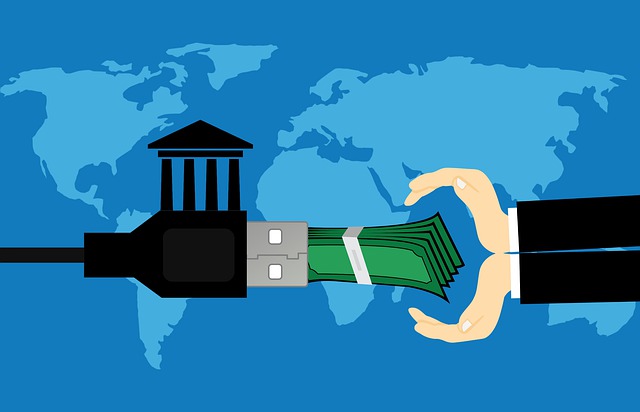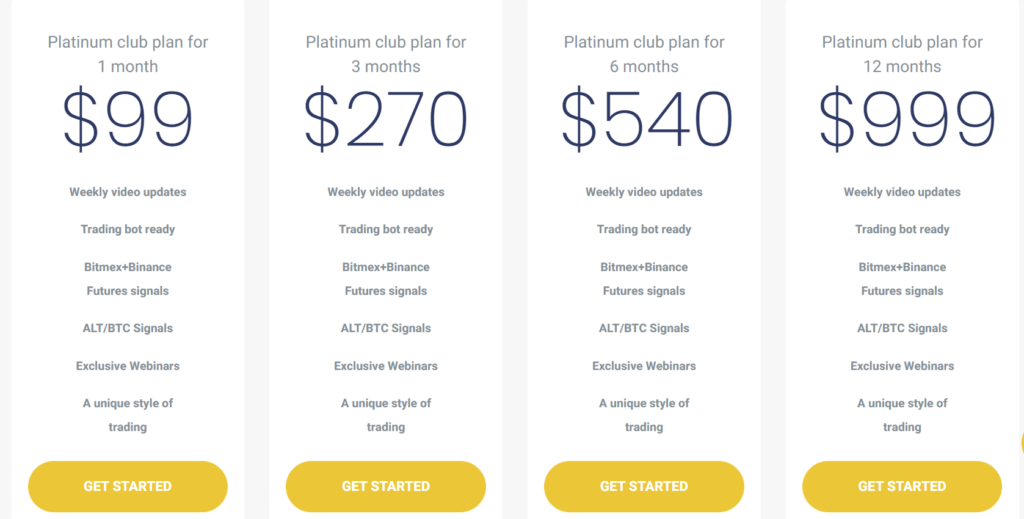
The straddle is a type of option trade that involves purchasing both a call and put option with the same strike price. This strategy is very popular with investors who expect a major shift in the stock markets but don't know if it will be up or down.
The straddle is not necessarily the best way to profit when volatility is occurring, but it is certainly one of the most lucrative. This strategy will help you keep your entire investment intact if the market doesn't move.
The net option premium and risk of losing must be considered when trading a cross-border straddle. This is calculated as the total cost of the options divided by the underlying security's strike price.
Profitable straddles can be made if the price of the security you are straddling rises or drops more than the option premium. This is called a "directional bias." Profits are also possible if volatility rises enough to offset decaying times value of your straddle.

Generally, straddles will be most successful when a stock’s price is likely or expected to change rapidly. They work best when the stock's price is likely to change dramatically due to an earnings announcement or news event.
The straddle is not suitable for all investors, and it's important to determine your individual investment goals and risk tolerance before making this decision. For the best options for you, it is advisable to consult a financial advisor.
Long straddles, while very lucrative when the underlying share price moves in the desired direction they are not profitable. They also come with risk and may lose money if that stock falls. A long straddle is only profitable if there is a significant price change.
If the underlying stock falls too much, profit is lost. The maximum possible loss on a long straddle is limited to the amount paid for the trade.
A long straddle has another advantage: it is a direction neutral strategy. This means that investors only care about the stock's performance and not its travel. A straddle may not be the best option for everyone because it requires advanced forecasting skills.

Strangle is an alternative type of straddle. It involves buying both a put option and a call for the same asset with the same strike prices. This is a safer but less expensive option than the longer straddle.
Although a strangle is more affordable than a long-straddle, it carries a greater risk as the underlying security must make an even bigger jump to become profitable. It also tends to be more difficult to get in and out of, so you must have a good idea of the direction that the underlying stock will take before entering this strategy.
The profitability of a long-straddle can be affected by many factors such as volatility and liquidity. You should also remember that long straddles are expensive. Before you commit to this strategy, it is important to be realistic about what it will cost.
FAQ
What are the benefits and drawbacks of investing online?
Online investing offers convenience as its main benefit. Online investing makes it easy to manage your investments from anywhere on the planet with an internet connection. Online investing allows you to have access to real-time market information and place trades without ever leaving your home. Online brokerages typically charge less than traditional brokerages. This makes investing easier, especially if you have a smaller amount of money.
However, there are some drawbacks to online investing. For example, it can be difficult to get personalized advice and guidance when trading online, as you don't have a physical broker or financial advisor to help you make decisions. Online trading platforms can offer less security than traditional brokerages. Investors should be aware of these risks. Online trading can be more complex and difficult than conventional investing. Before you begin, make sure to thoroughly understand the markets.
Online investing is a complicated process. It is important to be familiar with the various types of investments that are available. Investors have many options. They can choose from stocks, bonds, mutual funds and cash equivalents. Each investment has its risks and rewards. Before you decide which type of investment is best for you, it is important that your research is thorough. There may be restrictions on investments such as minimum deposits or other requirements.
How can I invest in Bitcoin?
Although it may seem difficult to invest in Bitcoin, it is not as complicated as you might think. You just need the right knowledge, tools, and resources to get started.
There are many options for investing. To get exposure to Bitcoin, you can buy it directly, use an exchange or use a financial instrument, known as a derivatives agreement.
You'll also need to decide where you will store your Bitcoin - there are many options available such as wallets, exchanges, custodians, and cold storage. You may choose one option or another depending on your goals and risk appetite.
Next, gather any additional information to help you feel confident about your investment decision. Learning the basics of cryptocurrencies and how they work before diving in is important. With that said, make sure you keep track of market news and developments so you can stay up-to-date with crypto trends.
Finally, create a plan for investing in Bitcoin based on your level of experience and set reasonable expectations for returns - this will give you a better chance at success long-term too!
Which is safe crypto or forex?
Forex trading and cryptocurrency are risky investments. They have varying returns and potential risks.
Crypto, which is shorthand for cryptocurrency, refers to a digital currency that was created using code and blockchain technology. It can trade on exchanges just like any money, and has been the subject speculative investment because of its drastic price swings.
Forex trading or foreign currency currency trading is a highly leveraged investment in which participants speculate about the value of one currency relative to another. Forex can pose a risky investment, and can result in significant losses if they are not managed properly.
Both Crypto and Forex have their advantages and disadvantages but, overall, crypto tends to carry a greater level of risk compared to Forex. Because of the limited supply and regulations around cryptocurrencies, prices can fluctuate. But forex markets move more consistently so investors have more control. Therefore when determining which between Crypto and Forex is safer it would depend on one's own risk appetite as well as their experience with each investment option before making a final decision.
Which trading platform is the best?
Many traders may find it challenging to choose the best trading platform. It can be overwhelming to pick the right platform for you when there are so many options.
The best trading platform must offer all of the features that you need such as chart analysis tools and real-time market data. It should also have sophisticated order execution capabilities. It must also be easy to use and intuitive.
You will need to have access to multiple account types, low fees, reliable customer support, and educational resources. You should look for demo accounts and free trials that allow you to practice with virtual money without risking your real cash.
Consider your trading style when searching for a platform. This includes whether you are active or passive, how often you trade and what asset classes you prefer. These factors will help you narrow down your search to find the right trading platform.
Once you have identified the platform that suits you best, it is time to explore additional features such backtesting capabilities and stock screening tools. Additionally, ensure your chosen platform provides appropriate security protocols in place to protect your data from breaches or theft.
MetaTrader 4/5 (MT4/MT5) and cTrader are some of the most well-known trading platforms.
Frequently Asked Fragen
What are the 4 types of investing?
Investing is a way to grow your finances while potentially earning money over the long term. There are four major types of investment: stocks, bonds mutual funds, cash equivalents, and stock.
Stocks can be divided into two groups: common stock and preferred stock. A common stock gives an individual ownership right of a company, including voting rights at shareholders' meetings and the potential to earn dividends. Preferred stock also gives ownership rights but with no voting privileges, as well as fixed dividend payments that offer investors a reliable income stream.
Bonds are loans that investors make to governments or companies in return for interest payments. They expire at the maturity date and can be repaid with interest payments. While bonds offer more stability and lower risk than stocks, the returns are usually lower than those of stocks.
Mutual funds involve pooling investor money together in order to spread investment risk and diversify investments over many different types of securities including stocks, bonds, and commodities. Professional managers manage mutual funds. They use their experience to choose profitable investments based on pre-determined criteria, such as risk level or expected return rate.
Cash equivalents include products such as Treasury bills, money market deposits, certificates of deposit (CDs), and commercial paper which often mature within one year or less during which time they carry minimal risks of default or downturns in their value. This type of investment is for conservative investors who do not want to take on high risk but still seek higher returns than traditional low-interest bank account deposits.
Which trading site is best suited for beginners?
Your level of experience with online trading will determine your ability to trade. If you're completely new to the online trading process, it would be a great idea for you to go through an established broker with experienced advisors.
They take the guesswork out when it comes to choosing companies and make solid recommendations that will help you build a steady portfolio over time. Plus, most offer interactive tools to demonstrate how trades work without risking real money.
On the other hand, if you want more control over your investments and have a bit of knowledge already, there are plenty of sites that allow you to trade independently. They offer customizable trading platforms, live data feeds, and research resources like real-time analytics to make well-informed decisions.
You can find customer reviews on any route, no matter what. These will give insight into the experience and level of service at each site before you commit.
Statistics
- One pip typically equals 1/100 of 1%. (investopedia.com)
- Call E*Trade for rates on debit balances above $499,999.99, as its rates are not published for anything above this amount; Effective since 12/16/2022, TD Ameritrade 11.75% for debit balances of $250,000 to $499,999.99. (fidelity.com)
- Effective since 12/15/2022, E*Trade has 11.20% for debit balances of $250,000 to $499,999.99. (fidelity.com)
- Effective since 12/16/2022, Schwab has 10.825% for debit balances of $250,000 to $499,999.99. (fidelity.com)
- Fidelity's current base margin rate is 11.325%. (fidelity.com)
External Links
How To
How can I verify the legitimacy of an online investment opportunity?
It is important to do your research before investing online. Make sure you research the company behind the opportunity. Also, ensure they are registered with the relevant financial authorities. You should also be alert for industry restrictions and regulations that might apply to your investments.
Review past performance data, if possible. Look for current customer reviews online to get a sense of how customers have experienced the investment opportunity. Ask yourself if it's too good to be true and beware of claims that imply a guarantee of future results or substantial returns.
You should understand the investment risk profile and be familiar with the terms. Before you sign up for an account, verify the fees and commissions that may be applicable to your tax. You should ensure that you are getting the terms and services you have paid for by doing due diligence checks if necessary. In the event that your investment does not go according to plan, make sure you have an exit strategy. This could reduce losses over time.